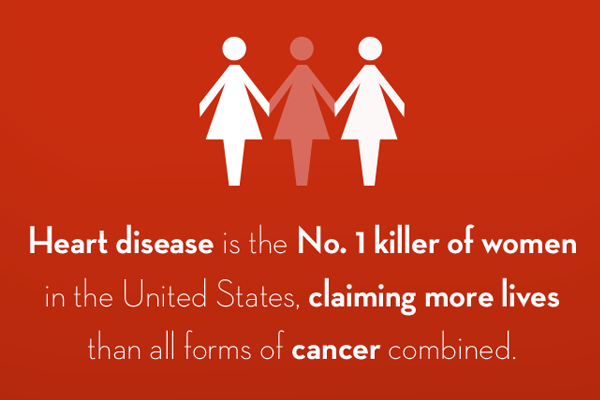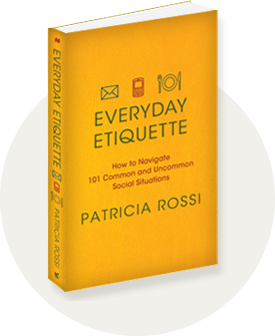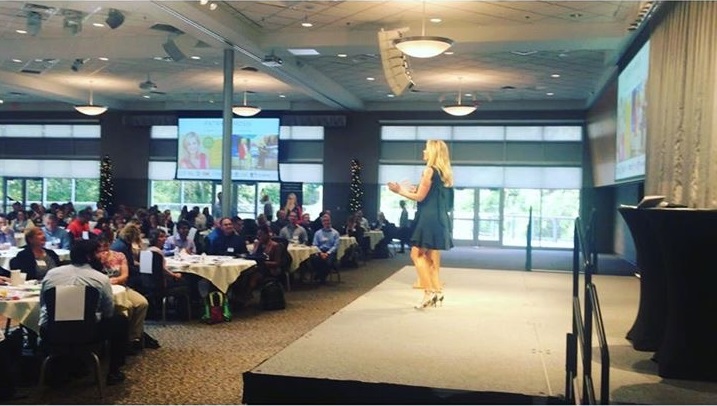
February 7th is National Wear Red Day, bringing to light an issue which was largely out of public awareness for a number of years.
The issue at hand is women’s heart health, and heart disease in women specifically. Heart disease is normally thought of as a health risk in older men, rather than women, but did you know heart disease is the number one killer of women in the United States? The numbers are so high that women die from heart disease than all forms of cancer combined?
In 2004, heart disease claimed the lives of over 500,000 women
That number must go down. Too many wives, mothers, and daughters are being taken by this disease, and we need to band together to help other women take steps necessary to live longer, healthier lives.
That’s what Go Red for Women and National Wear Red Day are all about. The lives impacted and the stories we hear are at the core our own stories, since many (if not all) of us can think of a woman in our life who has struggled with some aspect of heart health. For many issues, simply raising awareness and education is a step in the right direction, and that’s why I hope you will wear red on Friday with millions of other women (and men)!
With awareness comes education and action, and there are several ways you can be an important part of both. One way to educate can be to point others towards the American Heart Association’s website, which lists the signs and symptoms of heart disease. For older friends and family who may not have internet access or feel comfortable navigating the site, please print out the article for them.
Apart from chest pain (uncomfortable pressure, squeezing, fullness or pain in the center of the chest), the most common symptoms women experience during a heart attack are:
-
Pain or discomfort in one or both arms, the back, neck, jaw or stomach
-
Shortness of breath, with or without chest discomfort
-
Other signs such as breaking out in a cold sweat, nausea or lightheadedness
Source: American Heart Association
A second way is to share the Heart Attack Risk Calculator, and use it yourself! Regardless of your age and activity level, heart health is something we should always pay close attention to! Another way to raise awareness and educate is by watching the funny, tongue-in-cheek viral video titled “A Little Heart Attack”. In this video, actress Elizabeth Banks shows many of the signs of heart attack, including a few that women are more prone to experience than men.
The most important thing to point out is that one of the main dangers to women are ourselves! We want to take care of others, have a clean house, a career, and everything else under control. Banks’ character continued to ignore the signs and symptoms, even when her son was seeing them! To me, the most laughable, sad, and honest line was right at the end, when mom has accepted she’s having “a little heart attack”.
Emergency operator: “Ma’am, we’ll have an ambulance there in two minutes”
Mom sits up: “Two minutes?!”
Looks around, sees the mess
Mom: “Can you make it ten?”
This perfectly illustrates the situation we find ourselves in, but we can’t keep up appearances when our collective health is at risk. When a woman dies of heart disease every 65 seconds, changes need to be made, and bold action must be taken!
What else can we do? Here are three additional actions you can take to help raise awareness and education on women’s heart disease.
Start a Conversation
Ask the women in your life how they are handling their risk factors, and lovingly encourage them to make changes if needed. If they’re healthy, make a commitment to intentionally follow a plan to stay that way together.
Join or Start a Walking/Running Group
A fitness routine can be daunting, but it doesn’t have to be! Sometimes, changing your thinking about what a workout is can be just as helpful. The Kitchen workout is a great reminder that you can do a simple, effective workout using what you have available in the kitchen! Making exercise a social event helps increase the likelihood you’ll stick with the habit, since the accountability of a group will help everyone!
Leverage Social Media
On February 7th, use the hashtag #GoRedChallenge on Twitter and Instagram, and post pictures to the Facebook page. Each of us have a community we can share this information with, and the ripple effects of our actions can spread in ways we can’t even imagine!
I hope you will join me and millions of other women (and men) wearing red and fighting heart disease. The life you save may end up being your own.
For more information, and to stay updated on heart disease in women, visit the American Heart Association’s Go Red for Women website.




